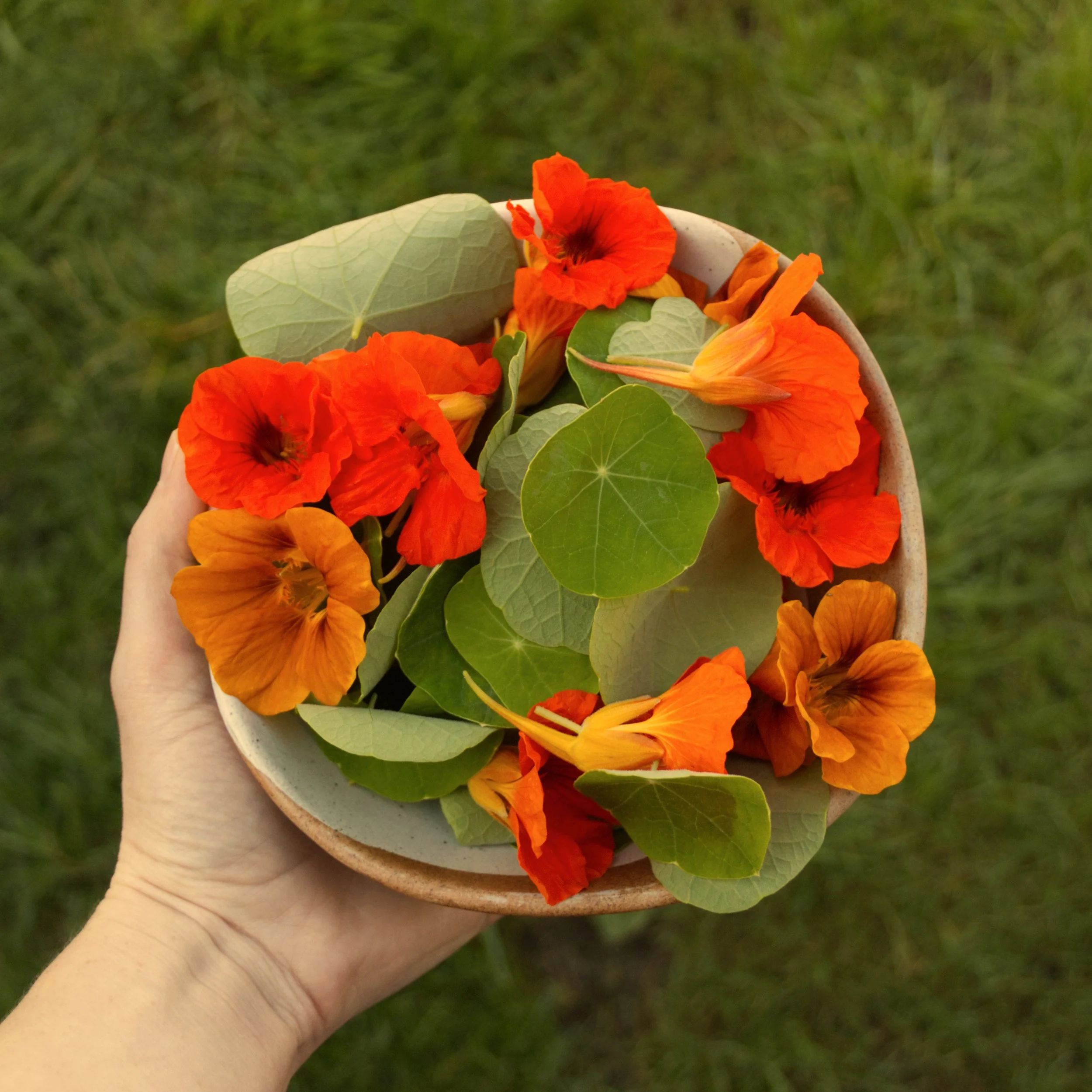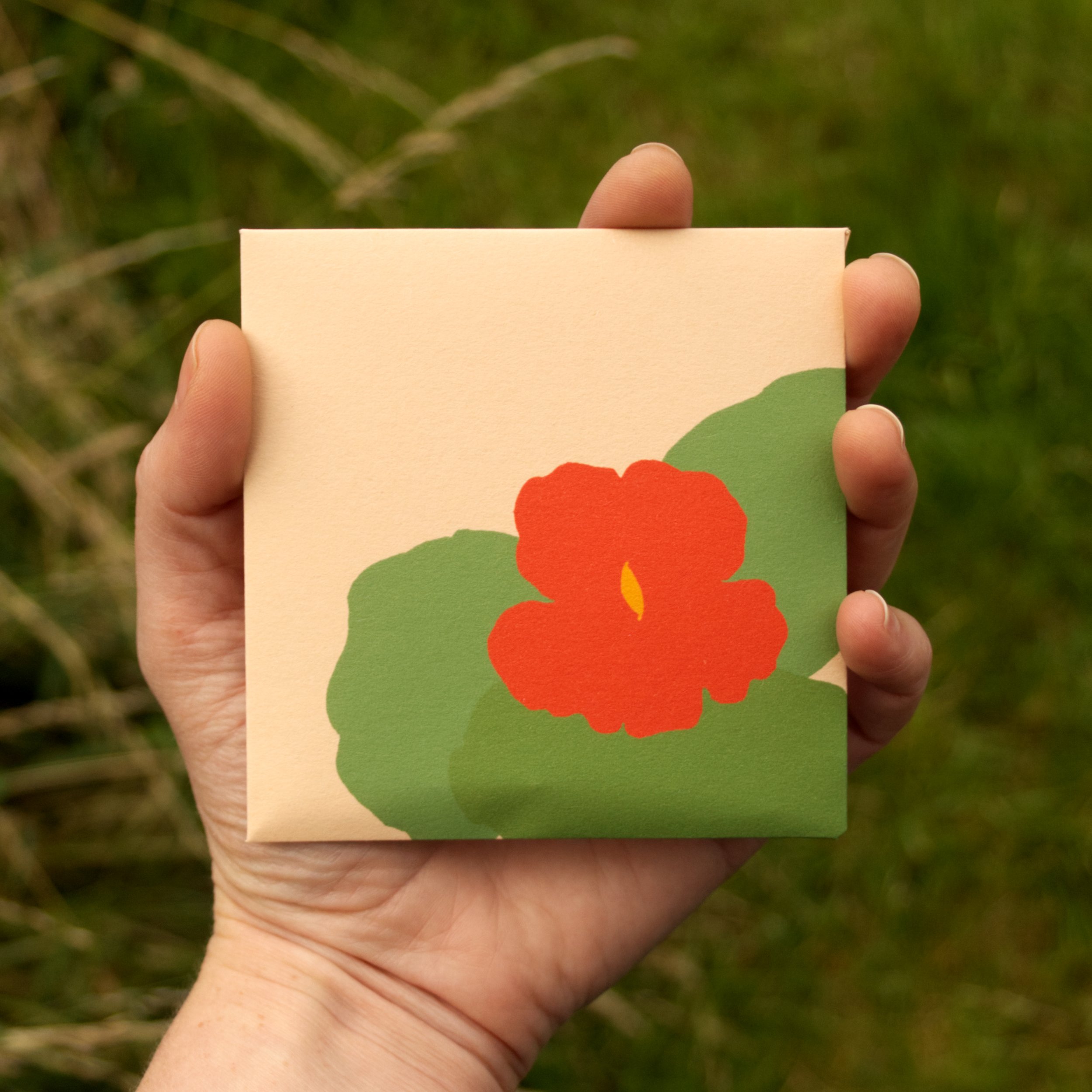 Image 1 of 6
Image 1 of 6

 Image 2 of 6
Image 2 of 6

 Image 3 of 6
Image 3 of 6

 Image 4 of 6
Image 4 of 6

 Image 5 of 6
Image 5 of 6

 Image 6 of 6
Image 6 of 6







meri a mari: welsh nasturtium seeds
Illustrated pack of nasturtium seeds featuring Welsh plant names and folklore, as well as instructions for how to sow, grow, eat, drink and use the plant.
Native to South America, nasturtiums were an important plant in ancient Incan societies in Peru. Brought to Europe in the 16th century, the plant became a popular addition to European cultivated gardens The plant is favoured by bees and the small white (or cabbage) butterfly, where females will lay eggs on the undersides of leaves for the caterpillars to feed on once hatched, before turning into pupae.
plant: a quick and easy to grow annual with circular leaves and bright, striking flowers. Grows to approx 40cm in height.
seeds: large and easy to handle. Sow into seed compost in trays, pots or directly into earth.
soil: plant out into well draining poor quality soil.
light: full sun.
harvest: when leaves and flowers are big enough, snip off at the stem. Seeds can be easily collected by hand once developed.
edible: flowers, leaves, buds and fleshy seeds are all edible and have a spicy, mustardy flavour. Leaves can be grown as micro-greens.
drinkable: can be added to infusions and tisanes.
medicinal:the leaves contain vitamin C, iron, and have antiseptic substances.
pollinators: the flowers are loved by bees and the cabbage butterfly.
houseplant: can be grown indoors on a sunny windowsill.
store: flower buds can be pickled in vinegar and kept in the fridge. Leaves can be dried and used as seasoning.
Approx 20 seeds, organically produced in Cornwall. Packaging designed and made by hand in Pembrokeshire, Wales, from 100% recycled content.
Illustrated pack of nasturtium seeds featuring Welsh plant names and folklore, as well as instructions for how to sow, grow, eat, drink and use the plant.
Native to South America, nasturtiums were an important plant in ancient Incan societies in Peru. Brought to Europe in the 16th century, the plant became a popular addition to European cultivated gardens The plant is favoured by bees and the small white (or cabbage) butterfly, where females will lay eggs on the undersides of leaves for the caterpillars to feed on once hatched, before turning into pupae.
plant: a quick and easy to grow annual with circular leaves and bright, striking flowers. Grows to approx 40cm in height.
seeds: large and easy to handle. Sow into seed compost in trays, pots or directly into earth.
soil: plant out into well draining poor quality soil.
light: full sun.
harvest: when leaves and flowers are big enough, snip off at the stem. Seeds can be easily collected by hand once developed.
edible: flowers, leaves, buds and fleshy seeds are all edible and have a spicy, mustardy flavour. Leaves can be grown as micro-greens.
drinkable: can be added to infusions and tisanes.
medicinal:the leaves contain vitamin C, iron, and have antiseptic substances.
pollinators: the flowers are loved by bees and the cabbage butterfly.
houseplant: can be grown indoors on a sunny windowsill.
store: flower buds can be pickled in vinegar and kept in the fridge. Leaves can be dried and used as seasoning.
Approx 20 seeds, organically produced in Cornwall. Packaging designed and made by hand in Pembrokeshire, Wales, from 100% recycled content.